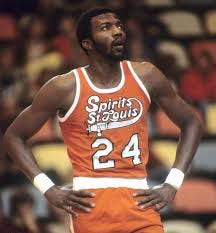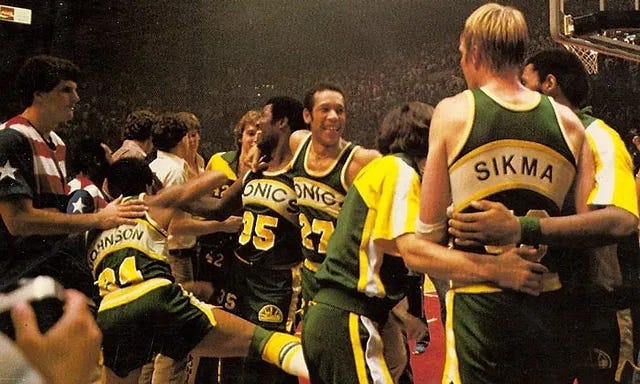A Radical NBA Expansion and Scheduling Idea
Writing out a detailed plan for NBA expansion that also tackles the league’s omnipresent issues with scheduling and maintaining widespread interest during the meat of the regular season is an itch I have had in recent years.
With commissioner Adam Silver saying “we’ll turn to expansion” ahead of Game 2 of the NBA Finals, it’s time to scratch that itch.
Excluding the return of a franchise to Charlotte after the original Hornets’ departure for New Orleans, it’s been almost 30 years since the NBA last expanded. The addition of the erstwhile Bobcats to the league almost 20 years ago gave the NBA 30 members, a nice even number with balanced conferences, but not quite as symmetrical as the NFL with its 32 franchises.
Presumably, Silver’s allusion is to a 32-team league — and that’s all well and good.
But with concerns about dwindling interest in the regular season growing each year, the question of tanking, the introduction of an already juiceless regular-season “tournament” and consideration of real expansion, the folks in Secaucus should really consider hitting up The Press Break for an idea that addresses all three of these concerns at once.
First: Expansion.
While 32 teams is nice and uniform, it’s also a mere extension of the status quo. My plan for NBA expansion is to expand by 10 new franchises, giving the league 40 teams.
The 10 cities I add:
Tampa
Three franchises in Florida might be oversaturation, but when the Sunshine State added the Heat and Magic in the ‘80s, it was similarly a gamble. The rewards of that gamble paying off are evident today, both in current Finals participant Miami having become one of the most consistent and well-run franchises in the NBA, and the league growing the game among the state’s youth.
With Florida’s continued population growth, increased interest in the sport in the southern part of the state, and Tampa having done an admirable job hosting the Toronto Raptors during the COVID-impacted 2021 season, it’s a worthy host city for expansion.
The above spec jersey was made by a designer in Toronto during the 2021 NBA season.
What’s more, it’s different fan bases but the city’s embrace of a less traditionally popular league in the NHL via the Lightning suggests a thirst for professional sports.Chicago
Yes, Chicago already has an NBA team in the Bulls. However, Chicago’s also the only of the big three American cities with just one NBA franchise. Given basketball’s cultural significance to Chicago, which is every bit on par with Los Angeles and New York, there’s no doubt the city could support two teams.
In a nod to the history both of Chicago and the game itself, a competitive branch of the Globetrotters is an intriguing prospect. While the club’s name is “Harlem,” promoter Abe Saperstein based the Globetrotters in Chicago, and the old Chicago Stadium was home to the Trotters’ crowning achievement: Beating the NBA champion Minneapolis Lakers in 1948.Louisville
There’s arguments to be made over the potential of a pro franchise in College Basketball Country. Neither incarnation of the Hornets were all that relevant while nestled near Tobacco Road, and the Royals became the Kings and failed in both Cincinnati and Kansas City — two cities that love their college hoops.
Would a Louisville-based NBA team succeed, competing for attention with the rabid Wildcats and Cardinals fans? Maybe, maybe not, but the Bluegrass State’s love of the game makes it worth exploring.
The Colonels were among the more successful ABA franchises a few generations back, playing in a much less-established league, and Louisville has the geographic benefit of perhaps also appealing to hoopheads in southern Ohio.St. Louis
Although for different reasons than Louisville, there are concerns that the NBA would be doomed to fail in St. Louis. Most notably, is St. Louis a basketball town?
There’s risk, and perhaps Kansas City would be better-suited for NBA expansion within Missouri. But given the Spirits of St. Louis were the one club frozen out of the ABA merger — and with the Nuggets in their first-ever Finals, meaning each of the ABA additions has now been to the championship round — it feels worth the gamble to see if the Spirits could make it work in the modern league.
Plus, they would immediately have the best uniforms in the NBA.Las Vegas
It feels almost like a given that when Adam Silver discusses NBA expansion, Las Vegas is assured a spot. The city’s population boom post-recession, its emphatic embrace of hockey’s Golden Knights, the addition of the Raiders in the NFL and the bevy of arenas around Vegas all suggest it’s inevitable.
LeBron James has not-so-subtly hinted at wanting to co-own a Las Vegas NBA franchise, and the city has a rich basketball tradition going back decades.Nashville
A youthful population boom and a city that’s proven it will get behind its sport franchises in both the Titans and Predators, Nashville is one of the easiest choices among my 10.Austin
Austin makes the cut for a variety of reasons. First and most obvious is, like Nashville, Austin has seen a young population surge in recent years and the Texas capital has the demographics to support an NBA franchise.
Second, this plan assuages the city’s growing demand for a pro team without allowing Austin’s growing population of tech ghouls to steal the Spurs away from San Antonio.Tidewater Region
Past NBA expansion succeeded when adding smaller metropolitan areas without other major-pro sports franchises. The Milwaukee Bucks, Portland Trail Blazers, and — although now a giant metropolis, it was originally a small city — Phoenix Suns all flourished during a transitional time for the NBA.
Neighboring cities Hampton Roads, Norfolk and Virginia Beach combine to fit that mold, and the Tidewater isn’t far from the commonwealth’s capital of Richmond. The entire region has an illustrious basketball history suggesting the pro game would have no trouble catching on, and Virginia Beach has made strides toward building a new, modern arena.Seattle
Along with Vegas, Seattle seems the most obvious and inevitable actual expansion choice. The city never should have lost the Sonics, as any longtime NBA fan will attest.
The only caveat with expansion back to the Pacific Northwest city? The new franchise has the branding and lineage of the original Supersonics, right down to hanging a 1979 NBA Champions banner.Vancouver, B.C.
The Pacific Northwest lost two franchises in less than a decade with the Supersonics moving to Oklahoma City and becoming the Thunder seven years after the Grizzlies exited Vancouver for Memphis.
The difference is that Vancouver didn’t have the history nor the rabid fan base Seattle had for the NBA. The league arguably pulled the plug on the Vancouver Grizzlies much too early, but the NBA might also have overreached into Canada a generation too early.
In the two decades since the Grizzlies relocated to Memphis, however, Canada has boasted a two-time Most Valuable Player in Steve Nash; claimed an NBA Finals champion with the 2019 Raptors; and grown its presence in the league with a variety of Canadian-born stars.
The Canada of today is more basketball-friendly than in the ‘90s, and it’s an ideal time to re-add Vancouver to the mix.
With our 10 cities established, we now have a 40-team NBA. That may seem like a bloated league — and it is! But the plan isn’t for a 40-team association, but rather two 20-team leagues with a promotion-relegation system akin to soccer’s English Premier League.
You have two divisions under the NBA umbrella — and, no, the lower division isn’t akin to nor a replacement for the G League. It’s not a developmental league, and each team is independent of each other but split based on competitiveness.
Call the two leagues whatever you like; my idea is the top division being the NBA O’Brien Division, as the champion of the NBA Finals receives the Larry O’Brien Trophy. The other is the Stern Division, named for the late commissioner David Stern, with the top team receiving a trophy thusly named.
The O’Brien Division Playoffs remain the same as the current NBA Playoffs1, with the top 16 teams advancing. Key differences are that seeding is done from 1-to-16 throughout the entire league rather than by conference, as the traditional conference model is no longer necessary.
Instead, the 20 teams play each other four times over the course of the regular season: That’s two home games and two road games against every team in the NBA O’Brien Division for a total of 76 regular-season contests.
The Stern Division season concludes at the end of the regular season with the top four teams earning promotion to the O’Brien Division in the next campaign. The four O’Brien Division teams that fail to make the Playoffs are relegated to the Stern Division in the promoted franchises’ places.
This offers one solution to tanking, as the front office of the No. 16 seed might not view merely qualifying for the Playoffs as “worth it” from the perspective of having a realistic shot at winning the Finals — but it’s better than being relegated and losing out on Playoffs TV revenue.
As for the in-season tournament Silver touted in the same TNT appearance during which he mentioned expansion, a single-elimination event that incorporates all 40 teams from both leagues and thus is the only opportunity to see the two divisions compete during the season adds a layer of uniqueness sorely lacking from the actual product.
The current NBA Playoffs without the play-in round, it should be noted.





